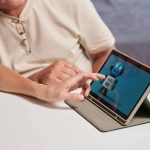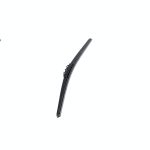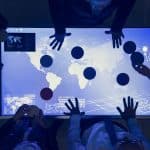Whether you’re a seasoned photographer or just starting out, the world of wildlife photography offers a captivating and rewarding pursuit. Wildlife photographers have the unique opportunity to capture the beauty and complexity of the natural world in a single frame, producing remarkable images that can inspire, inform, and entertain. In this article, we will explore how to navigate the wildlife photography landscape and offer some tried-and-true tips for capturing stunning shots of animals in their natural habitats.
The Art of Wildlife Photography
Wildlife photography is a genre that combines the technical skills of photography with an understanding and appreciation for nature and its inhabitants. It’s about more than just snapping pictures of animals. It involves capturing a moment, a behavior, or an emotion that conveys the essence of the subject.
A lire aussi : What Are the Best Practices for Digital Marketing and Growing Your Online Presence?
As a wildlife photographer, you’re tasked with telling a story through your images. This means understanding your subject’s habits and behaviors, carefully selecting your equipment, and being patient enough to wait for the perfect shot.
Choosing the Right Camera and Lens
One of the first steps in embarking on your journey into wildlife photography is choosing the appropriate camera and lens. While any camera can technically be used for wildlife photography, certain types and models offer features more suited to capturing nature’s fast-paced and unpredictable moments.
Sujet a lire : How can AI optimize energy consumption in smart cities?
A camera with a fast autofocus system, a high continuous shooting rate, and a good ISO performance can significantly improve your ability to capture sharp, well-exposed photos of moving subjects. A high-resolution camera can also provide more detail in your photos, which can be especially beneficial when photographing animals with intricate patterns or textures.
The lens you choose can equally impact your photos. A telephoto lens is often recommended for wildlife photography as it allows you to maintain a safe and respectful distance from your subject while still capturing detailed images. Lenses with a wide aperture can also be beneficial as they allow for faster shutter speeds, reducing the chance of motion blur in your photos.
Understanding Your Subjects
To capture compelling images, you must understand your subjects. Spend time observing the animals you wish to photograph. Learn their habits, understand their behaviors, and anticipate their movements. This knowledge will not only help you compose your shots but also ensure you’re in the right place at the right time to capture those fleeting moments of natural beauty.
For example, if you’re photographing birds, you might want to understand their feeding and nesting habits. Knowing the time of day they’re most active can help you capture them in action. Similarly, understanding an animal’s fear response can help you approach without causing distress, ensuring ethical photography practices.
Mastering the Light
Arguably, one of the most crucial aspects of photography is understanding and manipulating light. In wildlife photography, you often deal with natural light, which can be unpredictable and challenging. However, if harnessed correctly, it can help elevate your images and showcase the beauty of your subjects.
Early morning and late afternoon, often referred to as the golden hours, provide soft, warm light that can add depth and dimension to your photos. Overcast days can offer diffused light, reducing harsh shadows and highlighting your subject’s details.
In more challenging lighting conditions, you might need to adjust your camera settings. A higher ISO can be used in low light conditions, while a lower ISO works best in bright light. Understanding how to balance shutter speed, aperture, and ISO is crucial in managing the light in your images.
Exploring the World of Wildlife Photography
Ultimately, wildlife photography is a journey. It’s about exploring the natural world, connecting with its inhabitants, and sharing these experiences through your photos. It requires patience, passion, and perseverance. It might involve early mornings, late nights, and a lot of waiting. But when you capture that perfect shot, it’s all worth it.
Remember, your goal as a wildlife photographer is not just to take pictures. It’s to tell a story, to evoke emotion, and to inspire others to appreciate and protect the natural world. With every image you capture, you have the power to make a difference. So, pick up your camera, head out into the wild, and start capturing the beauty of the natural world.
Enhancing Your Photography Skills
Wildlife photography is an art that requires continuous learning, practice, and refinement of your skills. The mastery of your equipment, understanding of animal behavior, and ability to adapt to nature’s changing conditions are all crucial elements in becoming a proficient wildlife photographer.
Beginning with the basics, you will need to be conversant with all the features and settings on your camera. This includes understanding shutter speed, aperture, ISO, and how these elements work together to affect the final image. A correct combination of these settings can immensely enhance the quality of your wildlife photos. For instance, a fast shutter speed is crucial when capturing animals in motion to avoid blur, while a wider aperture can help create a shallow depth of field, making the subject stand out from the background.
Beyond the technical aspect, develop your composition skills. This includes understanding the rule of thirds, leading lines, and the use of negative space to create visually pleasing and balanced images. Keep in mind, breaking these rules can sometimes lead to equally stunning images.
Another essential photography skill is learning to work with different lighting conditions. As previously mentioned, the golden hours of early morning and late afternoon often provide the best natural light. However, being able to capture stunning wildlife images in harsh midday sun or under the cover of the forest canopy can set your work apart.
Lastly, keep learning and experimenting. Photography is an evolving field, and staying current with new techniques and technologies can help improve your wildlife photography skills. Attend photography workshops, participate in online forums, and follow other wildlife photographers whose work you admire. Critically analyzing their work can provide new ideas and insights for your own photography.
Conclusion: Capturing the Soul of the Natural World
Wildlife photography is a pursuit that offers immeasurable rewards. It provides a chance to explore and appreciate the natural world, to observe and learn from its multitude of inhabitants, and to share these experiences with others through your images.
Capturing stunning wildlife photos is not just about technical proficiency or having the best equipment. It’s about patience, observation, and a deep connection with nature. It’s about waiting for that elusive perfect shot, where the light, the setting, and the subject all align to create an image that speaks to the soul.
Remember, as a wildlife photographer, your images can inspire others to appreciate and respect the natural world. Your work can help highlight the beauty of our planet’s diverse flora and fauna, and the importance of their conservation.
Wildlife photography is a journey of discovery, where every step, every frame captured, brings you closer to understanding the intricate and beautiful tapestry of life on Earth. So, pick up your camera, step into nature, and start creating your own stunning wildlife images. Through your lens, you have the power to capture, to communicate, and to conserve the wonder of the natural world.













